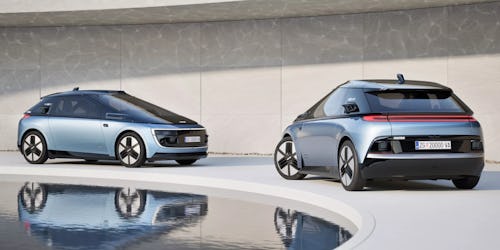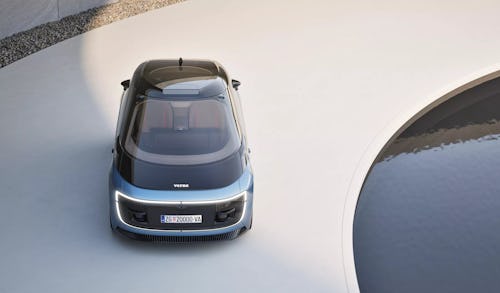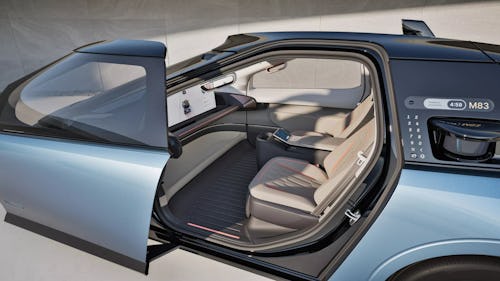
There’s a new robotaxi on the scene, but not from the company you might think.
Rimac, the EV maker known for its Nevera hypercar that’s broken several records, has branched off into making a robotaxi service called Verne. Named after Jules Verne, the prolific French author who was one of the earliest pioneers of science fiction, the autonomous vehicle made its first appearance at Rimac’s campus in Croatia.

Now that Rimac has beaten Tesla to a robotaxi reveal, the real question is if it can beat Elon Musk’s company on production. Rimac plans to have the Verne launch in 2026, which at least gives us a concrete timeline. When it comes to Tesla’s robotaxi, Musk only confirmed on X that the official reveal will be held on August 8, but has made no indication of when it will hit the streets.
An EV With No Steering Wheel
As for Verne, the startup partnered with Mobileye to power its autonomous vehicle, which features no steering wheel or pedals inside. Instead, the Mobileye platform pairs with a mix of sensors including cameras, radars, and lidar, to have the Verne fleet handle different types of roads, weather conditions, and even local driving styles. If that’s true, the true test is whether or not the Verne can adapt to the aggressive drivers of rush hour Manhattan.

As for passenger comfort, Verne claimed its two-seater design has more interior space than a Rolls-Royce. Once you hail a Verne with the app, the sleek EV pulls up and has doors that slide forward to allow you to slip into the cabin easily. And once you’re inside, you can adjust the extra-large seats with five levels of comfort that are suited for different scenarios, like working, relaxing, or resting.
A True Hands-Free EV Experience
You may not need to take the wheel at any point, but Verne did include a physical switch called the median which lets you control when the ride starts and stops. Once you’re going, you can pass the time with an ultra-wide 43-inch display that’s paired with 17 speakers. Along with this display, the Verne has a touchscreen control panel in between the seats to adjust any car settings. This design makes more sense once you let go of the idea that you have to be driving when you’re sitting in what would be the driver’s seat. After all, Verne makes it so you feel like you’re being transported in a mobile living room, something that more EV makers are leaning their cabin design towards.

To round out the Verne experience, the startup will have a companion app where you can hail one of its robotaxis. From the app, you can check where your Verne is, see how long it takes to arrive, and even adjust the cabin’s temperature or scent. When certain vehicles aren’t picking up customers, Verne designed a home base called the mothership where the robotaxis will return for daily inspections, cleanings, maintenance, and recharges.
Coming to At Least 11 Cities
As expected, Verne will first launch in its Croatian hometown of Zagreb in 2026, where the company will also build the first mothership. After that, the company plans to roll out Verne to the U.K., Germany, and countries in the Middle East. Verne said that it has already signed agreements with 11 cities, but is negotiating with more than 30 others across the world.
With two years to go until Verne makes its first trip, Tesla still has a chance to catch up and put out its robotaxi before that. However, both companies still have to compete with Waymo, who recently opened up its autonomous ride-hailing service to all of San Francisco after previously limiting it to a waitlisted pilot program. It’s worth noting that Verne said in its press release that it’s not prioritizing being first with a robotaxi, but “creating the perfect customer experience.” Regardless of whoever comes to the market first, it looks like we’re finally getting some acceleration when it comes to a future with self-driving cars.
FTTT
0 Comments